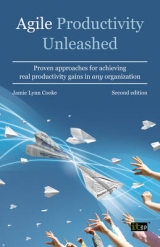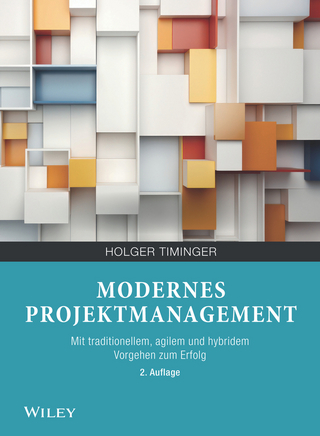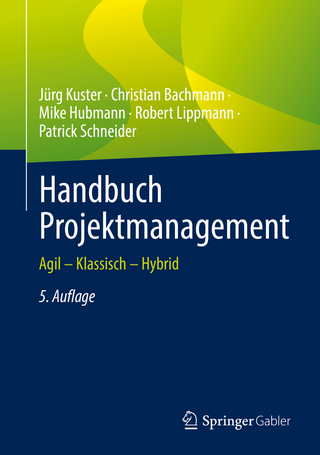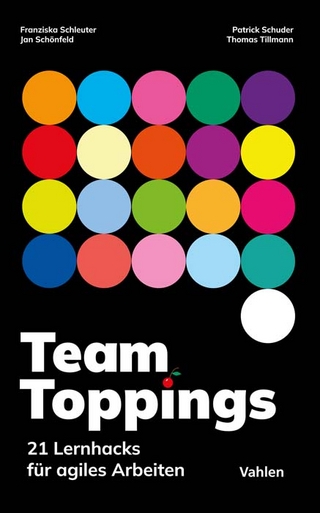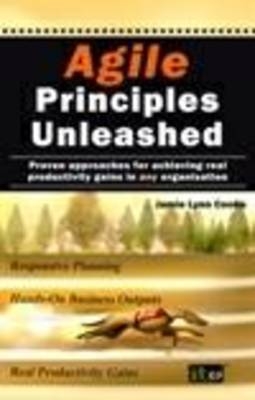
Agile Principles Unleashed
IT Governance Publishing (Verlag)
978-1-84928-057-0 (ISBN)
- Titel erscheint in neuer Auflage
- Artikel merken
Agile approaches are business practices with a proven track record for helping organisations achieve greater efficiency, higher quality outputs and increased customer satisfaction. They enable organisations to avoid the trappings of extensive up-front planning and up-front budget commitments by encouraging staff to regularly produce high quality business outputs; and by basing ongoing financial and resource commitments on the delivered outcomes. This focus on responsive planning based on tangible outputs is why Agile approaches have been successfully used in selected industries for over two decades, including the Information Technology (IT) industry. Agile Principles Unleashed: Proven approaches for achieving real productivity gains in any organisation introduces every industry sector to the Agile approaches that have dramatically improved the IT, product development and manufacturing sectors over the past two decades. Agile Principles Unleashed clearly explains how the key principles of Agile approaches can be used to significantly increase productivity, quality and customer satisfaction in any organisation.
Written in non-technical language specifically for business professionals, this book is an essential tool for anyone whose job it is to deliver high quality results on time and to budget. Jamie Lynn Cooke has 19 years of experience as a senior business analyst and solutions consultant, and has worked with more than 120 public and private sector organisations in Australia and North America. She has been working hands on with Agile methods since 2003.
Jamie Lynn Cooke has 19 years of experience as a senior business analyst and solutions consultant, working with over 120 public and private sector organisations throughout Australia, Canada and the United States. Her background includes business case development; strategic and operational reviews; business process modelling, mapping and optimisation; product and project management on small to multi-million dollar initiatives; quality management; risk analysis and mitigation; developing/conducting training courses; workshop delivery; and refining e-business strategies. She is a well-regarded speaker on both business and technology topics, most recently presenting at the Business Process Modelling world conference in Brisbane, Australia and at the AgileCanberra professional forums. Jamie has been working hands-on with Agile methods and practices since 2003, and has researched hundreds of books and articles on Agile topics. She is a signatory on the Agile Manifesto, has attended numerous Agile seminars and has worked with prominent consultants to promote Agile practices to large organisations. Jamie has a Bachelor of Science in Engineering Psychology (Human Factors Engineering) from Tufts University in Medford, Massachusetts, and a Graduate Certificate in E-Business/Business Informatics from the University of Canberra in Australia.
Introduction Agile: an executive summary SECTION 1: A CASE STUDY A Case Study: Traditional versus Agile Approaches Website building in a competitive marketplace Product marketing in a competitive marketplace Order fulfilment in a competitive marketplace But what about my organisation? The path forward SECTION 2: WHAT YOU NEED TO KNOW ABOUT AGILE Chapter 1: Agile in a Nutshell Understanding Agile principles Agile in action Popular Agile methods Who uses Agile? Chapter 2: Why is Agile So Effective? Management of controllable risk Minimal start-up costs Initial and ongoing returns Chapter 3: Why Don't More Organisations Use Agile? Chapter 4: Agile Sounds Good, But - SECTION 3: 12 AGILE PRINCIPLES THAT WILL REVOLUTIONISE YOUR ORGANISATION Chapter 5: Responsive Planning Why every up-front plan fails Apply, Inspect, Adapt Defining (and refining) your goals Paving the pathway Empowering the delivery team The critical decision points When to walk away Publicising your success Chapter 6: Business-value Driven Work Real productivity Dancing around the budget bonfire Over-delivery is wasted money Measuring cost/benefit Communicating actionable goals and priorities Drawing the line When priorities change It's more than the baton Chapter 7: Hands-on Business Outputs The 'try before you buy' power position There is no substitute for reality Mitigating risk Continuous delivery of valuable outputs When the end does not justify the means Chapter 8: Real-time Customer Feedback Every audience is a customer The false security of market testing Intrinsic customer satisfaction The 'expert by proxy' myth Hiring a customer Using the customer to manage your budget Chapter 9: Immovable Deadlines Why you should never move a deadline The power of imminent time-frames Early delivery means early payback Setting the next deadline Chapter 10: Management by Self-motivation 'I'm not going to do it - and you can't make me' The top-down and bottom-up management myths The power of self-organised teams Giving the team a higher purpose In my estimation - Trusting the team Why shorter deadlines lead to happier employees The end of overtime Success breeds motivation Chapter 11: 'Just-in-time' Communication When was the last time you attended a valuable meeting? Redefining the corporate meeting What can you do in five minutes? Knowledge transfer through pairing, co-location and cross-training Documentation is no substitute The most valuable meeting of all Chapter 12: Immediate Status Tracking The end of the monthly report Measuring productivity by outputs Tracking overall progress in the requirements backlog Tracking day-to-day work in the delivery backlog The power of the 'burndown' chart The real-time executive dashboard Early and continuous delivery tracking Redefining risk management Chapter 13: Waste Management What is waste management? It's what you don't do that matters The power and peril of the value stream The waiting game Movement without added value Task-switching and time leakage Doing it right the first time 'Just-in-time' versus 'just-in-case' Maximising your resources Chapter 14: Constantly Measurable Quality How much does quality cost? Weight control and the bathroom scale True quality requires a culture change The impact of high communication Quality by design Fit-for-purpose outputs The (almost) real-time measuring stick Exponential returns on your quality investment Chapter 15: Rear-view Mirror Checking Slight imperfections You only need to glance at the mirror - What a retrospective is - and is not The self-correcting team Changing your travel plans Chapter 16: Continuous Improvement Become better - or become obsolete One step back - five steps forward Regular review and adjustment Quantifying and measuring improvement Bringing it all together SECTION 4: MAKING AGILE WORK IN YOUR ORGANISATION Chapter 17: Selecting Agile Approaches That Best Meet Your Needs The five fundamental questions The Agile approaches selection tool Chapter 18: Introducing Agile Within Your Organisation Dip your toes or dive right in? Choosing the right kick-off point Agile-by-stealth A shared understanding of Agile Chapter 19: Using Agile Tools Responsive budgeting Expected business value calculation The requirements backlog The burndown chart The delivery backlog Chapter 20: Expanding the Use of Agile in Your Organisation Bibliography Agile resources Cost/benefit calculation resources Other industry resources Author's Note on Agile Resources ITG Resources
| Erscheint lt. Verlag | 27.7.2010 |
|---|---|
| Zusatzinfo | black & white illustrations |
| Verlagsort | Ely |
| Sprache | englisch |
| Maße | 140 x 216 mm |
| Gewicht | 454 g |
| Themenwelt | Mathematik / Informatik ► Informatik |
| Wirtschaft ► Betriebswirtschaft / Management ► Projektmanagement | |
| ISBN-10 | 1-84928-057-6 / 1849280576 |
| ISBN-13 | 978-1-84928-057-0 / 9781849280570 |
| Zustand | Neuware |
| Informationen gemäß Produktsicherheitsverordnung (GPSR) | |
| Haben Sie eine Frage zum Produkt? |
aus dem Bereich
